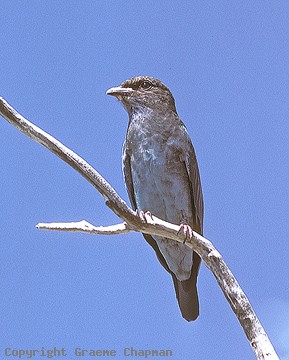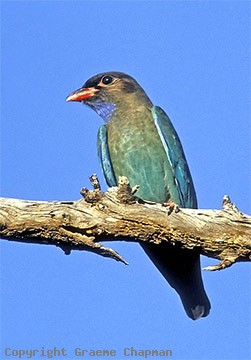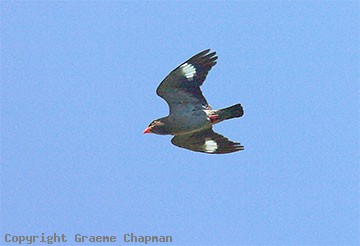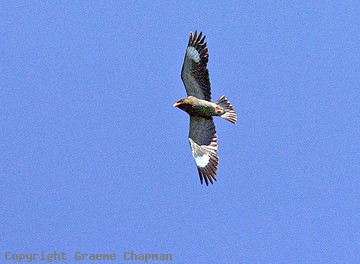
The Dollarbird or Broad-billed Roller is the sole member of the family Coraciidae to inhabit Australia. A migratory species it arrives in eastern and northern Australia from New Guinea in early October and remains until March. Breeding pairs nest in high tree hollows, usually 10 m or more above ground. Great aerial acrobats they sally forth from regular lookout perches such as dead trees or powerlines and catch most of their insect food on the wing - diving and gliding, swooping and stooping and even an occasional loop the loop! They do sometimes fly to the ground to pounce on prey they have spotted from above.
Nesting hollows are traditional and are reoccupied year after year, whether by the same individuals nobody knows, but it is likely.The male courtship feeds his mate before she lays and both birds brood the two white eggs and feed the young.
The name Dollarbird has an interesting history and is truly Australian in origin. It dates back to the early 1800's when the Spanish silver dollar and famous "holey dollar" were official currency in N.S.W. Early settlers applied the name, likening the whitish patches on the underwings to silver dollar coins, a fanciful idea, for the patches are not all that round, but to the naked eye, they may seem that way. Binoculars would have been a rare commodity in those days. Nevertheless, the name has stuck and it certainly is a more catchy title than "Broad-billed Roller".
In 2020 probably as a result of the reduction in numbers of insects Dollarbirds
have been fewer in number in southern Australia.









